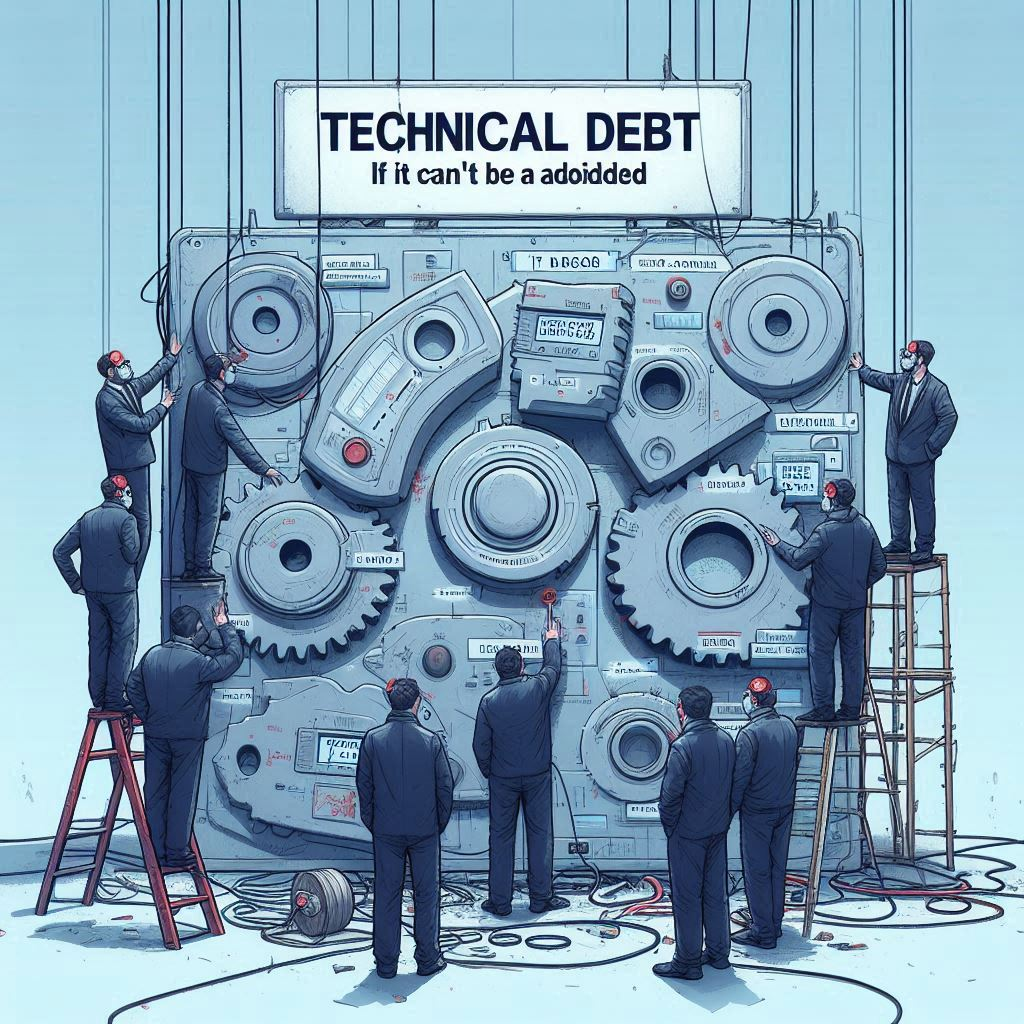You Can’t Avoid Technical Debt | 매거진에 참여하세요
You Can’t Avoid Technical Debt
#technical #debt #startup #life #aiTools #teamwork #code #quality #grwoth #endure
You Can’t Avoid Technical Debt—So Just Endure It
I’m still coding. Still dealing with technical debt. And somehow, still moving forward.
Just recently, I ripped out layers of tangled CSS and replaced them with component-scoped SCSS.
I merged duplicate components into one, standardized inconsistent variables, and cleaned up inefficiencies caused by a lack of deep understanding of how React actually works. Along the way, I also optimized our server architecture.
Looking back, I find myself blaming my past self.
But maybe I shouldn’t.
Because technical debt isn’t a mistake.
It’s a part of growth.
What Is Technical Debt?
Technical debt refers to the cost of choosing a quick-and-dirty solution now instead of a better—but slower—one.
It’s the “let’s just make it work and fix it later” approach.
It’s not unlike taking out a loan: you get short-term results at the cost of long-term complexity. Over time, the interest piles up—maintenance becomes harder, feature development slows down, and your team’s agility declines.
But here’s the nuance: technical debt isn’t always a sign of laziness or bad decisions.
Sometimes it’s a strategic choice made under real-world constraints—tight deadlines, uncertain requirements, or a need to launch fast to capture market feedback.
Technical debt can be the price you pay to survive.
And sometimes, survival is the smartest strategy.
You Can’t Escape Technical Debt
There’s no such thing as a world without technical debt.
There’s no perfect codebase. Every product is built under some level of uncertainty. Every sprint includes a compromise or two.
The point isn’t to avoid technical debt entirely. It’s to manage it consciously, preventing it from silently accumulating into a crisis.
There’s a saying: “One compromise today becomes two debts tomorrow.”
Keep that in mind.

Why and When Does Technical Debt Arise?
There are many triggers, but the most common is a tight product timeline.
When your launch date is fixed, the team is small, and users are impatient for results, you prioritize speed over perfection. And that’s OK.
But there’s another root cause: lack of experience.
Sometimes it’s structural—junior developers or domain newcomers make design choices that don’t scale well. It felt like the best approach at the time, but hindsight shows otherwise.
Other times, it’s a knowledge gap. Misusing tools or frameworks you don’t fully understand—like overusing prop drilling in React or running unindexed queries in production—can introduce invisible liabilities.
In other words, technical debt isn’t just a bug—it’s a milestone in your growth.
The fact that you see it now means you’ve leveled up.
Not All Debt Needs to Be Repaid
Contrary to what some may say, not all technical debt must be paid.
Some debt is temporary. Some is intentional.
For instance, refactoring a promo page that will disappear in a week? Probably not worth it.
What matters most is awareness. If you know where the debt lives and understand the risk, it becomes a manageable investment rather than a ticking time bomb.
The real danger lies in the debt you don’t even know exists.
Build a Culture That Embraces Technical Debt
Don’t hide it. Don’t shame it.
Create a culture where technical debt is openly discussed and proactively addressed.
Host a "Refactoring Week" or "Debt Cleanup Day".
Encourage teams to document decisions using Architecture Decision Records (ADRs).
Most importantly, bridge the gap between engineers and business stakeholders.
If you're a tech lead, don't say, "We want to clean up old code."
Say, "If we don’t refactor this module, it will delay new feature development in three months."
Speak the language of risk management, not tech hygiene.
Prioritization and Decision-Making Are Everything
Trying to repay all technical debt is a waste of time.
Instead, focus on the debt that’s actively blocking your business goals.
Prioritize. Allocate resources. Make deliberate tradeoffs.
When time is limited, it’s okay to choose between shipping new features and doing internal cleanup. But make that decision with the team, not around them.
Over time, small wins compound into long-term progress.
Technical Debt Is Proof of Growth
Here’s a thought: if you have no technical debt, maybe your product isn’t evolving.
Technical debt appears where things are changing—where there’s iteration, experimentation, and user feedback.
It’s the trail left behind by motion and momentum.
What once felt “good enough” may now feel amateurish. And that means you’ve grown.
That’s not failure—it’s progress.
The Process of Paying Down Debt = Transformation
Fixing technical debt isn’t just a code cleanup.
It often involves rethinking your system from the ground up.
This is where true collaboration shines.
As you dissect what went wrong and redesign what could be better, teams bond. Skills deepen. Trust builds.
Yes, there will be friction. Yes, you’ll feel stuck.
But on the other side lies cleaner code, better systems, and stronger teams.
Sometimes, Fixing Technical Debt Sparks Innovation
The refactor isn’t just cleanup—it can be a launchpad.
Rewriting that legacy service? Maybe it’s time to move to microservices.
Tired of manual deployments? Maybe it’s time to adopt CI/CD.
Addressing technical debt can reveal cracks in your process and prompt breakthroughs you didn’t anticipate.
Technical Debt Isn’t a Sin—It’s Reality
Let’s stop demonizing technical debt.
Let’s stop punishing ourselves for not getting it perfect the first time.
Technical debt is a natural byproduct of real-world development. It’s a side effect of growth, speed, and sometimes inexperience.
And that’s OK.
If we document it, plan for it, and manage it consciously—it becomes an investment, not a liability.
And that’s something worth building on.






